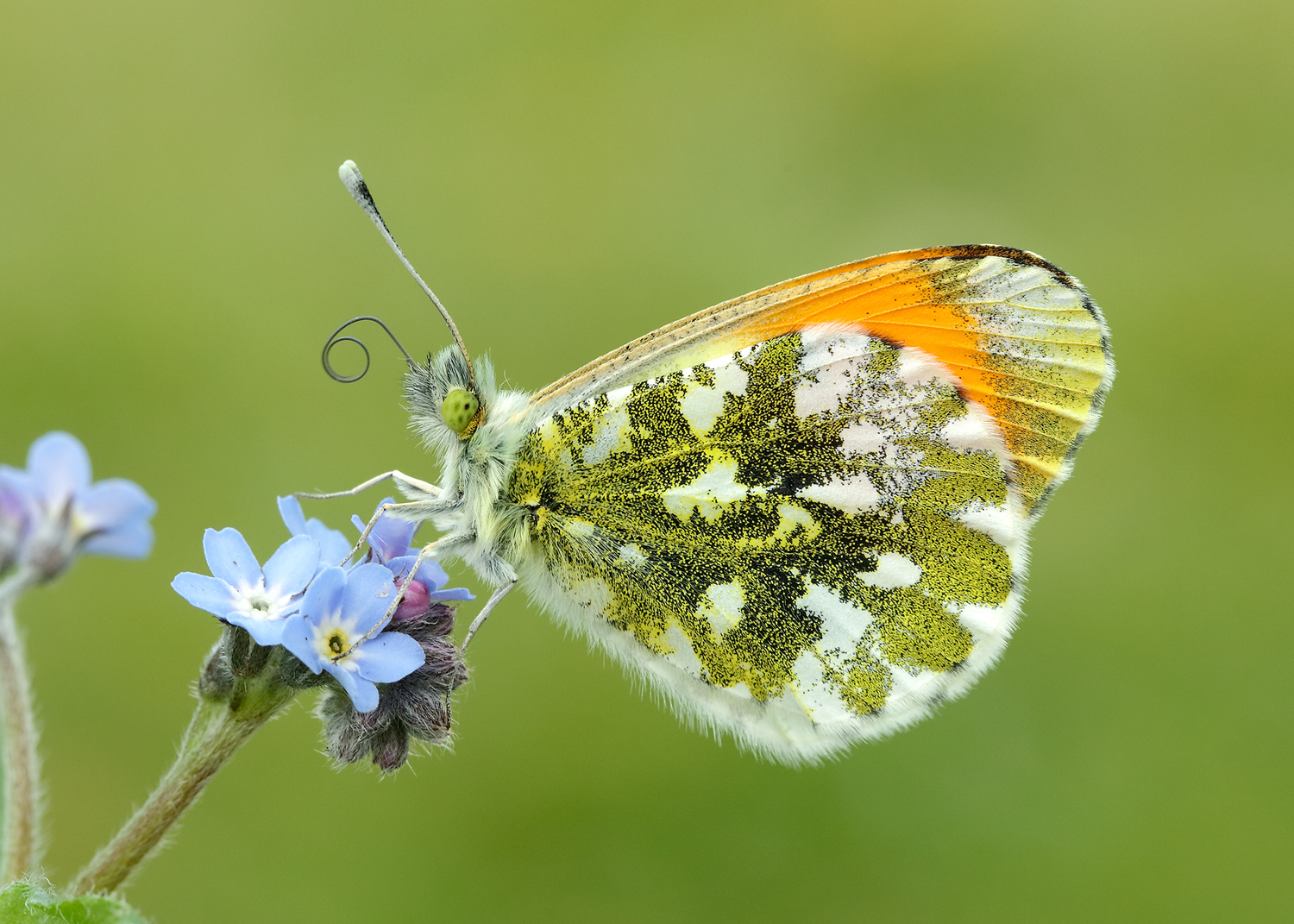Usually in March there are tantalizing glimpses of warmer weather.
This year we have had to wait until April to start tidying the herbaceous beds and shrub borders. Having decided what has survived the winter, you can then create spaces where seeds can be sown. Hardy annuals will provide nectar for butterflies and moths throughout the summer, until the first frosts of autumn.
Packets of mixed seeds are available in garden centres but these are usually for bees and butterflies or you can select individual flowers more tailored to butterflies and moths.
What to plant…..
These suggestions are all easy to grow in well-drained soil in a sunny position:
- Pot Marigold Calendula officinalis (single form)
- Cornflower Centaurea cyanus
- Candytuft Iberis amara
- Red Valerian Centranthus ruber
- Chamomile Anthemis arvensis
- Forget-me-not Myosotis spp
- Night Scented Stock Matthiola longipetala
The seeds should be scattered, rather than planted in rows to give more natural grouping.
If you prefer to plant wild flowers, then the following are easily managed and can be left to seed from year to year:
- Common Bird’s-foot-trefoil Lotus corniculatus
- Sweet Rocket Hesperis matronalis
- Red Campion Silene dioica
Use Chive Allium schoenoprasum and Nasturtium Tropaeolum majus in the vegetable patch. Seeds for these can also be planted in April.
Chives provide nectar for butterflies and food for us. They also have a strong scent which will discourage pests from attacking some plants. If planted next to carrots they keep carrot root fly away and if near tomatoes will keep aphids away. They also have a fungicidal effect which discourages blackspot on roses.
Nasturtiums planted in close proximity to brassicas (cabbages) provide a host for the eggs and later caterpillars of Large and Small White butterflies, thus saving your cabbages.
Happy Gardening,
The BC Towers 'Secret Gardener'


